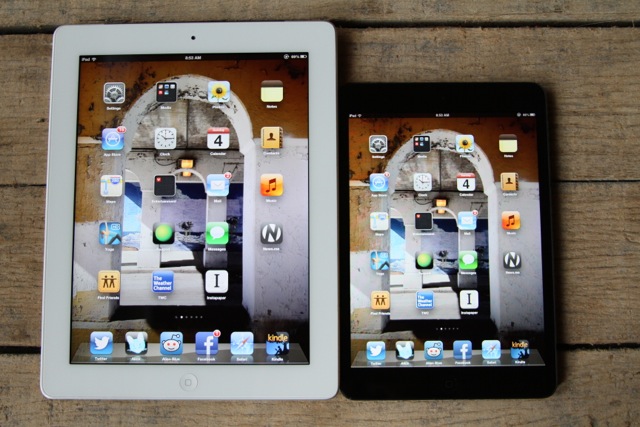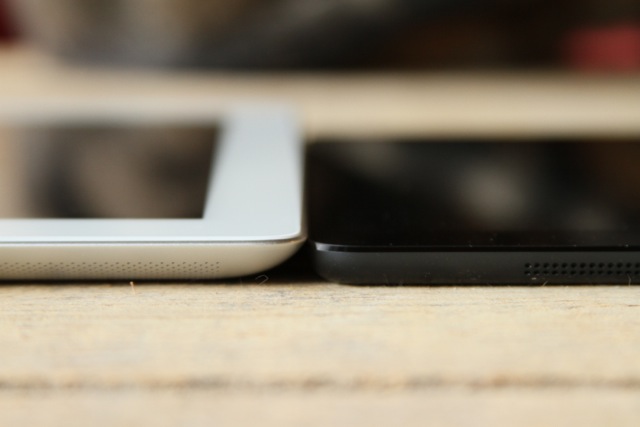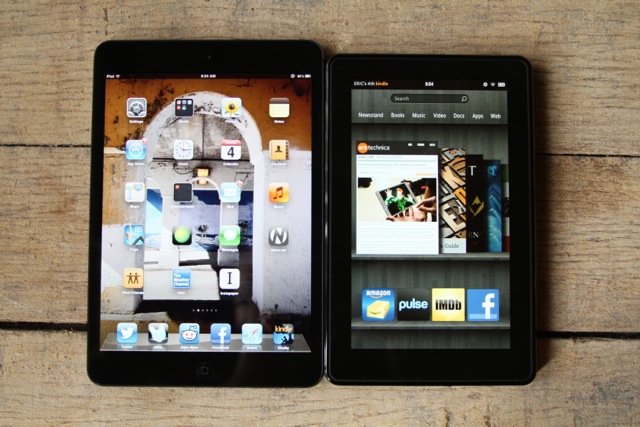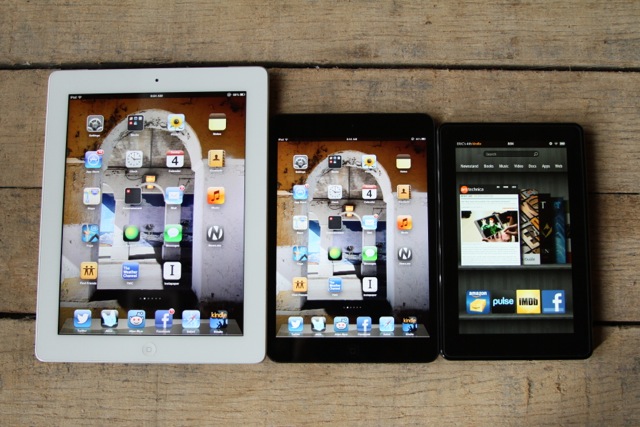
Former Apple CEO Steve Jobs famously trashed 7" tablets as being "dead in the water" in 2010. Two years later, under the reign of new CEO Tim Cook, Apple has released its own miniature tablet—one that has a diagonal screen measurement of 7.9", which Apple considers vastly different from what's offered by similar small tablets.
"Apple has done extensive user testing on user interfaces over many years, and we really understand this stuff," Jobs said in 2010. Indeed, Apple believes the new iPad mini is superior in every way to its 7" competition, yet still offers the full iPad experience—just in a smaller package. "Every inch an iPad," reads Apple's product page for the iPad mini.
But is it really? In the weeks leading up to the iPad mini's release, Ars readers from all walks of life made it overwhelmingly clear that their main concern is the device's usability as it compares to the full-sized iPad. How's the screen? What are apps like when shrunken down? How long can you hold it without fatigue? Is it really a high-quality iPad experience, like that of the third- or fourth-generation iPad?
As such, those iPad-centered usability experiences are what I focused on most when writing this review. Ars readers were also curious about the iPad mini compared against some of the more popular Android alternatives (namely the Nexus 7 and Kindle Fire). Those tablets didn't play a dominant role in my evaluation of the iPad mini, but they are part of the discussion when appropriate. It's also important to note this review is slightly different from past iPad reviews, because the iPad mini's internal specs are so similar to that of the iPad 2, which we reviewed in 2011.
So, what is the iPad mini really like to use in everyday life? Let's go through some of the technical details of the $329 Wi-Fi-only iPad mini first, then dive into the usability experience of a tablet that is "every inch an iPad," but smaller.
Physical design

Apple's party line is that the iPad mini is indeed a small iPad, but it's certainly no 7" tablet. Tim Cook recently said on the company's fourth quarter conference call that the iPad mini is "not a compromised product like the 7-inch tablets." He's consistently implied the iPad mini is much more—not only because it is technically larger than 7" tablets, but because its functional usability is different.
I'll get to the usability later, but for now let's focus on measurements and specs. Again, the iPad mini is technically not a 7" tablet like the Kindle Fire HD or a Nexus 7. But it runs in the same crowd: its dimensions are 7.87" x 5.3" x 0.28" (or 0.29" for Wi-Fi + Cellular). By comparison, the Kindle Fire HD 7" is 7.44" x 4.72" x 0.45" and the Nexus 7 is 7.81" x 4.72" x 0.41". If you want to compare against a full-sized iPad, the fourth-generation iPad is 9.5" x 7.31" x 0.37".
When put into perspective, this makes the iPad mini almost the same height as a Nexus 7, but almost a half-inch wider and about 2/3 the thickness of the Nexus 7. This is almost the same for the Kindle Fire HD 7", except that device is a bit shorter—the iPad mini is almost a half-inch taller when making this comparison.


Apple likes to brag that part of the reason the iPad mini is superior to similarly-sized tablets is its screen real estate. The iPad mini has roughly 35 percent more screen real estate than other 7" tablets, and Apple claims the usable area is 50 to 67 percent larger. This point may seem like nitpicking until you look at the iPad mini next to a competing device (in my case, a Kindle Fire). The point is really driven home here—although the UIs are obviously different, the iPad mini's screen does have a good amount more real estate than 7" tablets. (Keep in mind that some 7" tablets do sport higher-density displays; more on that below.)
In terms of weight, the iPad mini competes well. The Wi-Fi version is 0.68 pounds (308g), while the Wi-Fi + Cellular version is 0.69 pounds (312 grams). This is less than both the Nexus 7, which comes in at 0.75 pounds (340g), and the Kindle Fire HD 7", which is nearly 0.87 pounds (395g). And of course, it's quite a bit less than the full-sized iPad: the fourth-generation device is 1.44 pounds (652g), making the iPad mini less than half the weight. This certainly plays into its long-term "holdability," which I'll address more directly in the usability part of this review.

But overall, the iPad mini is still just an iPad. It has stereo speaker grilles on the bottom along with a new Lightning port. The volume button is on the right side, along with the mute/screen lock switch. The top has the lock button and a headphone jack. Contrary to constant rumors, Apple still included the Home button on the front of the device (though it does seem to travel a little more when you click it, compared to other iOS devices).
reader comments
188